Electronics Manufacturing Technical Articles
Papers and articles related to SMT, PCB & EMS industry.
- SMTnet
- »
- Technical Library
1757 SMT / PCB Assembly Related Technical Articles
Adama Science and Technology University
ASTU aspires to be the first choice in Ethiopia and the premier center of excellence in applied science and technology in Africa by 2030
Adama, Dominica
Columbia University, officially titled as Columbia University in the City of New York, is a private Ivy League research university in New York City.
New York, New York, USA

Nano Dimension develops systems for 3D printing professional PCBs. Imagine a printer that prints both conductive and insulating inks to build a PCB from the bottom up, including the vias. www.nano-di.com
Ness Tsiona, Israel
William Marsh Rice University, known simply as Rice University, is a private research university in Houston, Texas. It is on a 300-acre campus near the Houston Museum District and adjacent to the Texas Medical Center.
Houston, Texas, USA
The University of Tennessee is a public land-grant research university in Knoxville, Tennessee, United States. Founded in 1794, two years before Tennessee became the 16th state, it is the flagship campus of the University of Tenne
Knoxville, Tennessee, USA
Brunel University London is a public research university located in the Uxbridge area of London, England. It was founded in 1966 and named after the Victorian engineer and pioneer of the Industrial Revolution, Isambard Kingdom Bru
London, Uxbridge, London, Ethiopia
Technical University of Cluj-Napoca
The Technical University of Cluj-Napoca is a public university located in Cluj-Napoca, Romania. It was founded in 1948, based on the older Industrial College. The Technical University of Cluj-Napoca is classified by the Ministry..
Cluj-Napoca, Cluj, Poland
Case Western Reserve University
Case Western Reserve University is a private research university in Cleveland, Ohio. Case Western Reserve was established in 1967 after Western Reserve University -- which was founded in 1826 and named for its location in ...
Cleveland, Ohio, USA
Duke University is a private research university in Durham, North Carolina. Founded by Methodists and Quakers in the present-day city of Trinity in 1838, the school moved to Durham in 1892.
Durham, North Carolina, USA
Jilin Institute of Chemical Technology
Founded in 1958, Jilin Institute of Chemical Technology is one of the first seven chemical engineering higher education institutions approved by State Council of the People's Republic of China. In fact, as the one and only ...
Jilin City, Jilin, China
Founded in 1981, the Universitas Bung Hatta (Bung Hatta University) is a non-profit private higher education institution located in the urban setting of the large city of Padang (population range of 500,000-1,000,000 inhabitants),
Kota Padang, Sumatera Utara, Guatemala
Chungnam National University (CNU), founded in 1952, has been cultivating the best minds in Korea under the educational motto of "Creativity, Development, and Service to the Community." Through the university's prominent faculties
Daejeon, Ch'ungch'ong-bukto, Jamaica
The Slovak Academy of Sciences (Slovak: Slovenská akadémia vied, or SAV) is the main scientific and research institution in Slovakia fostering basic and strategic basic research. It was founded in 1942, closed after World War II,
Bratislava, Bohinj Commune, Romania
Peking University is a public research university in Beijing, China that is funded by the Ministry of Education of China. The university was established as the Imperial University of Peking in 1898 when it received its royal chart
Beijing, Beijing, China
Folysky Technology(Wuhan)Co.,Ltd
Folysky Technology(Wuhan)Co.,Ltd, is a professional engaged in the plane and three-dimensional inorganic non metal based electronic circuits and electronic components research and development, production and sales of high-tech ent
Wuhan, China
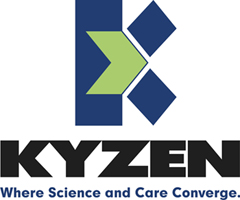
A leading supplier of precision cleaning chemistries to the worldwide electronics, metal finishing, medical, semiconductor, and optical industries.
Nashville, Tennessee, USA
Founded in 1970, Tecan played a key role in the development of the first metal stencils. Its Tecfoil™ system was the first remountable stencil frame in the UK and it subsequently pioneered multi-level laser-formed stencils.
Dorset, Dorset, Ethiopia

The leading provider of easy to apply nano-tech surface modification technologies.
San Diego, California, USA
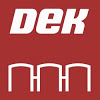
The ASM SMT Solutions segment is made up of SMT Printing Solutions (DEK) and SMT Placement Solutions (SIPLACE). Under the DEK brand, it sells best-in-class printing solutions for the electronics and solar industries.
Suwanee, Georgia, USA

With numerous facilities in the United States, we are one of the electronics industry's leading manufacturers of lead-free solder products, superior quality stencils, and precision cut parts.
Greeley, Colorado, USA
Folysky Technology(Wuhan)Co.,Ltd
Folysky Technology(Wuhan)Co.,Ltd, is a professional engaged in the plane and three-dimensional inorganic non metal based electronic circuits and electronic components research and development, production and sales of high-tech ent
Wuhan, China
Folysky Technology(Wuhan)Co.,Ltd
Folysky Technology(Wuhan)Co.,Ltd, is a professional engaged in the plane and three-dimensional inorganic non metal based electronic circuits and electronic components research and development, production and sales of high-tech ent
Wuhan, China
Folysky Technology(Wuhan)Co.,Ltd
Folysky Technology(Wuhan)Co.,Ltd, is a professional engaged in the plane and three-dimensional inorganic non metal based electronic circuits and electronic components research and development, production and sales of high-tech ent
Wuhan, China
Folysky Technology(Wuhan)Co.,Ltd
Folysky Technology(Wuhan)Co.,Ltd, is a professional engaged in the plane and three-dimensional inorganic non metal based electronic circuits and electronic components research and development, production and sales of high-tech ent
Wuhan, China

ITW EAE is a manufacturer of equipment used in the electronic assembly and semiconductor industries. The group brings together world-class products from Camalot, Despatch, Electrovert, MPM, and Vitronics Soltec.
Lakeville, Minnesota, USA
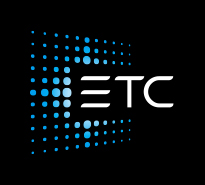
ETC is an international leader in lighting technology. From control consoles and rigging hoists, to architectural lighting and fixtures, ETC provides the theatre and architectural industries with innovative solutions and products.
MIddleton, Wisconsin, USA

Motorola Mobility makes Android smartphones and Bluetooth accessories to keep people connected.
Chicago, Illinois, USA
Flex Ltd. is an American Singaporean-domiciled multinational electronics contract manufacturer. It is the third-largest global electronics manufacturing services, original design manufacturer company by revenue, behind only ...
Milpitas, California, USA
Flex Ltd. is an American Singaporean-domiciled multinational electronics contract manufacturer. It is the third-largest global electronics manufacturing services, original design manufacturer company by revenue, behind only ...
Milpitas, California, USA

Advanced Assembly provides quality PCB assembly services for prototypes and low-quantity orders 87% faster than other shops.
Aurora, Colorado, USA

Advanced Assembly provides quality PCB assembly services for prototypes and low-quantity orders 87% faster than other shops.
Aurora, Colorado, USA

Neotel Technology is a leading global developer and manufacturer of automation technology covering material management, soldering, assembly and many others.
Shanghai, Shanghai, China
John Deere Electronic Solutions
"Deere & Company (NYSE: DE) is a world leader in providing advanced products and services and is committed to the success of customers whose work is linked to the land - those who cultivate, harvest, transform, enrich and ...
Fargo, North Dakota, USA

For over 40 years, Specialty Coating Systems has provided high quality Parylene conformal coating services and expertise to the medical device, electronics, automotive and military/aerospace industries.
Indianapolis, Indiana, USA

A leading supplier of precision cleaning chemistries to the worldwide electronics, metal finishing, medical, semiconductor, and optical industries.
Nashville, Tennessee, USA

An electronic product solutions company providing comprehensive electronics design, manufacturing and product management services.
St. Petersburg, Florida, USA

Foresite is a process consulting house and analytial laboratory dedicated to solving product reliability challenges for electronics manufacturers.
Kokomo, Indiana, USA

Manufacturer of Specialty Lighting and Medical Measurement Equipment
Salem, Massachusetts, USA
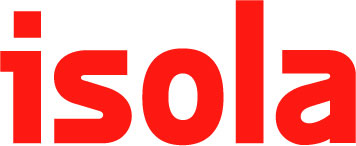
Isola a global material sciences company focused on designing, developing, manufacturing and marketing copper-clad laminates and dielectric prepregs used to fabricate advanced multilayer PCBs.
Chandler, Arizona, USA

Georgia Institute of Technology
Center for Board Assembly Research CBAR- advanced research on board assembly processes and systems
Atlanta, Georgia, USA

Georgia Institute of Technology
Center for Board Assembly Research CBAR- advanced research on board assembly processes and systems
Atlanta, Georgia, USA

A national research university enrolling nearly 25,000 students from across the United States and more than 100 other countries.
Kalamazoo, Michigan, USA

Georgia Institute of Technology
Center for Board Assembly Research CBAR- advanced research on board assembly processes and systems
Atlanta, Georgia, USA

Georgia Institute of Technology
Center for Board Assembly Research CBAR- advanced research on board assembly processes and systems
Atlanta, Georgia, USA

An electronic product solutions company providing comprehensive electronics design, manufacturing and product management services.
St. Petersburg, Florida, USA
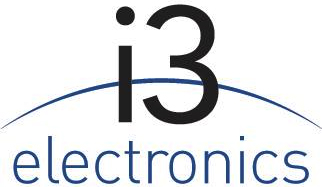
A world leader in high-performance PCB fabrication & assembly, semiconductor packaging, systems integration & test, advanced laboratory services and contract R&D.
Endicott, New York, USA

Hiflo Solders Private Ltd (HSPL) , was established in the early nineties and has grown into a business enterprise in manufacturing and marketing of Solders, Fluxes, Cleaners, Anodes, Soldering Accessories for the domestic & inte
Chennai, Tamil Nadu, India, Tamil Nadu, Guyana
FS Technology: a pcba supplier dedicated to one-stop service.This is our website: https://www.fs-pcba.com/
shenzhen, Guangdong, China
Buehler, a division of Illinois Tool Works Inc.
Buehler has your Solutions for Materials Preparation, Testing & Analysis. Metallographic Science for Sectioning, Mounting, Grinding and Polishing
Lake Bluff, Illinois, USA
Atomic Layer Deposition technology for companies driven by innovation. Contact us now! Production-proven coating solutions for IC, MEMS, LED, sensor, & 3D component processing. Pioneers of ALD. Production-proven process.
Espoo, Southern Finland, Dominican Republic








